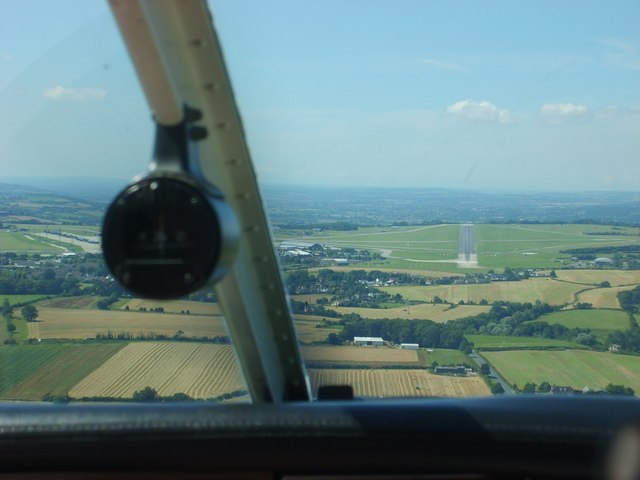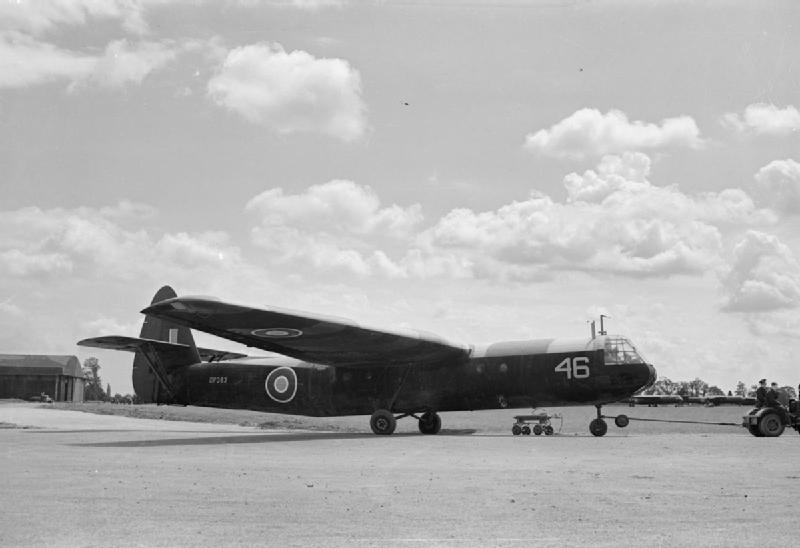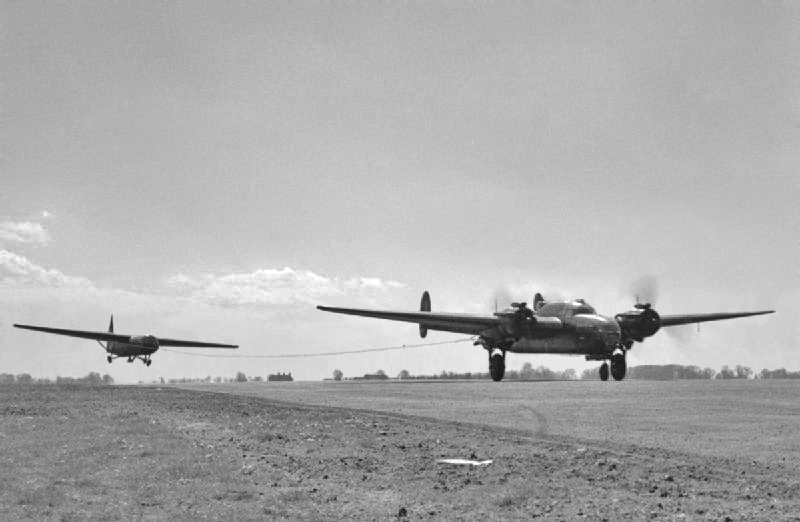|
RAF Lyneham
Royal Air Force Lyneham otherwise known as RAF Lyneham was a Royal Air Force station located northeast of Chippenham, Wiltshire, and southwest of Swindon, Wiltshire, England. The station was the home of all the Lockheed C-130 Hercules transport aircraft of the Royal Air Force (RAF) before they were relocated to RAF Brize Norton. RAF Lyneham was the Royal Air Force's principal transport hub, operating the modern Lockheed Martin C-130J Hercules, and the ageing, but very adaptable, Lockheed C-130K Hercules. The airfield was designated as a Master Diversion Airfield: it was one of the primary airfields to which aircraft could divert in the eventuality of their home bases being closed due to weather, or other unforeseen events such as aircraft crashes. The airfield became renowned for being the "gateway" between the United Kingdom and Afghanistan; the station was also where repatriation of British personnel killed in Iraq and Afghanistan took place. The bodies were transported thr ... [...More Info...] [...Related Items...] OR: [Wikipedia] [Google] [Baidu] |
MoD Lyneham
Ministry of Defence Lyneham or MOD Lyneham is a Ministry of Defence site in Wiltshire, England, about northeast of Chippenham and southwest of Swindon. The site houses the Defence School of Electronic and Mechanical Engineering. Also here is Prince Philip Barracks, housing the regimental headquarters of the Royal Electrical and Mechanical Engineers (REME), 8 Training Battalion REME and the REME Museum. Previously, the site was RAF Lyneham which closed on 31 December 2012. History RAF Lyneham RAF Lyneham was built in 1939, necessitating the demolition of Lyneham Court manor house, the buildings of Cranley Farm and the village's tennis courts. The airfield itself was initially a grass landing area although the RAF always planned to lay hard runways. Hangars and other buildings were dispersed around the site to avoid creating one large target for an aerial enemy. The station was opened on 18 May 1940 as No. 33 Maintenance Unit (33MU), with no ceremony and few personnel. Duri ... [...More Info...] [...Related Items...] OR: [Wikipedia] [Google] [Baidu] |
RAF Brize Norton
Royal Air Force Brize Norton or RAF Brize Norton in Oxfordshire, about west north-west of London, is the largest station of the Royal Air Force. It is close to the village of Brize Norton, and the towns of Carterton and Witney. The station is the base for air transport, air-to-air refuelling and military parachuting, with aircraft operating from the station including the Lockheed C-130 Hercules, Boeing C-17 Globemaster III, Airbus A400M Atlas and Airbus Voyager which replaced the now-decommissioned Vickers VC10 in September 2013 and the Lockheed TriStar in March 2014. Major infrastructure redevelopment began in 2010, ahead of the closure of RAF Lyneham in 2012, and Brize Norton became the sole air point of embarkation for British troops. History Royal Air Force Construction of RAF Brize Norton began in 1935 with the official opening taking place on 13 August 1937. The station was originally to be named RAF Carterton, given its proximity and relationship with the town of ... [...More Info...] [...Related Items...] OR: [Wikipedia] [Google] [Baidu] |
Lyneham, Wiltshire
Lyneham is a large village in north Wiltshire, England, within the civil parish of Lyneham and Bradenstoke, and situated southwest of Royal Wootton Bassett, north of Calne and southwest of Swindon. The village is on the A3102 road between Calne and Wootton Bassett. The part of Lyneham village close to the parish church is known as Church End. The civil parish includes the village of Bradenstoke and the hamlets of Preston and The Banks. History In 1086, Domesday Book recorded 42 households at ''Stoche'' in the northwest of the modern parish. Earthworks in this area known as Clack Mount, including a mound 20 metres in diameter, could be from a Norman motte-and-bailey castle, although the early history is uncertain. Bradenstoke Priory was founded nearby in 1142, possibly on the site of an earlier chapel. The hamlet on both sides of the road leading to the priory was called Clack from the 14th century, as shown on Andrews' and Dury's map of 1773; in the 20th century the name Br ... [...More Info...] [...Related Items...] OR: [Wikipedia] [Google] [Baidu] |
Civil Aviation Authority (United Kingdom)
The Civil Aviation Authority (CAA) is the statutory corporation which oversees and regulates all aspects of civil aviation in the United Kingdom. Its areas of responsibility include: * Supervising the issuing of pilots' licences, testing of equipment, calibrating of navaids, and many other inspections (Civil Aviation Flying Unit). * Managing the regulation of security standards, including vetting of all personnel in the aviation industry (Directorate of Aviation Security). * Overseeing the national protection scheme for customers abroad in the event of a travel company failure (Air Travel Organisers' Licensing – ATOL). The CAA is a public corporation of the Department for Transport, liaising with the government via the Standards Group of the Cabinet Office. Responsibilities The CAA directly or indirectly regulates all aspects of aviation in the UK. In some aspects of aviation it is the primary regulator. The UK government requires that the CAA's costs are met entirely fro ... [...More Info...] [...Related Items...] OR: [Wikipedia] [Google] [Baidu] |
Runway 24 RAF Lyneham - Geograph
According to the International Civil Aviation Organization (ICAO), a runway is a "defined rectangular area on a land aerodrome prepared for the landing and takeoff of aircraft". Runways may be a man-made surface (often asphalt, concrete, or a mixture of both) or a natural surface (grass, dirt, gravel, ice, sand or salt). Runways, as well as taxiways and ramps, are sometimes referred to as "tarmac", though very few runways are built using tarmac. Takeoff and landing areas defined on the surface of water for seaplanes are generally referred to as waterways. Runway lengths are now commonly given in meters worldwide, except in North America where feet are commonly used. History In 1916, in a World War I war effort context, the first concrete-paved runway was built in Clermont-Ferrand in France, allowing local company Michelin to manufacture Bréguet Aviation military aircraft. In January 1919, aviation pioneer Orville Wright underlined the need for "distinctly marked and ... [...More Info...] [...Related Items...] OR: [Wikipedia] [Google] [Baidu] |
Transport Command
RAF Transport Command was a Royal Air Force command that controlled all transport aircraft of the RAF. It was established on 25 March 1943 by the renaming of the RAF Ferry Command, and was subsequently renamed RAF Air Support Command in 1967. History Second World War During the Second World War, it at first ferried aircraft from factories to operational units and performed air transport. Later it took over the job of dropping paratroops from Army Cooperation Command as well. Transport Command was the only RAF command in to which aircrew originating in the Caribbean were not posted due to the fact that they might be required to fly to the United States where racial discrimination was legally entrenched at the time. In June 1944 the Command was made up of No. 38 Group RAF; No. 44 Group RAF; No. 45 Group RAF; No. 46 Group RAF; No. 216 Group RAF; No. 229 Group RAF; No. 114 Wing RAF, and No. 116 Wing RAF at RAF Hendon. No. 44 Group - HQ at Gloucester * "In the early days of t ... [...More Info...] [...Related Items...] OR: [Wikipedia] [Google] [Baidu] |
Avro Lancaster
The Avro Lancaster is a British Second World War heavy bomber. It was designed and manufactured by Avro as a contemporary of the Handley Page Halifax, both bombers having been developed to the same specification, as well as the Short Stirling, all three aircraft being four-engined heavy bombers adopted by the Royal Air Force (RAF) during the same wartime era. The Lancaster has its origins in the twin-engine Avro Manchester which had been developed during the late 1930s in response to the Air Ministry Specification P.13/36 for a medium bomber for "world-wide use" which could carry a torpedo internally, and make shallow dive-bombing attacks. Originally developed as an evolution of the Manchester (which had proved troublesome in service and was retired in 1942), the Lancaster was designed by Roy Chadwick and powered by four Rolls-Royce Merlins and in one of the versions, Bristol Hercules engines. It first saw service with RAF Bomber Command in 1942 and as the strategic bom ... [...More Info...] [...Related Items...] OR: [Wikipedia] [Google] [Baidu] |
Avro York
The Avro York was a British transport aircraft developed by Avro during the Second World War. The design was derived from the Avro Lancaster heavy bomber, several sections of the York and Lancaster being identical. Due to the importance of Lancaster production, York output proceeded slowly until 1944, after which a higher priority was placed upon transport aircraft. The York saw service in military and civilian roles with various operators between 1943 and 1964. In civilian service, British South American Airways (BSAA) and British Overseas Airways Corporation (BOAC) were the largest users of the type. In military service, large numbers of Yorks were used for air-supply missions during the Berlin Blockade 1948–49. A number of the type were used as air transports of heads of state and government; VIPs who flew on Yorks included British Prime Minister Winston Churchill, French General Charles de Gaulle, Indian Governor-General Lord Mountbatten and South African Prime Min ... [...More Info...] [...Related Items...] OR: [Wikipedia] [Google] [Baidu] |
Armstrong Whitworth Albemarle
The Armstrong Whitworth A.W.41 Albemarle was a twin-engine military transport aircraft, transport aircraft developed by the United Kingdom, British aircraft manufacturer Armstrong Whitworth and primarily produced by A.W. Hawksley Ltd, a subsidiary of the Gloster Aircraft Company. It was one of many aircraft which entered service with the Royal Air Force (RAF) during the World War II, Second World War. The Albemarle had been originally designed as a medium bomber to fulfil List_of_Air_Ministry_specifications#1930–1939, Specification B.9/38 for a aircraft that could be built of wood and metal without using any light alloys; however, military planners decided to deemphasise the bomber role in favour of aerial reconnaissance and transport missions, leading to the aircraft being extensively redesigned mid-development. Performing its maiden flight on 20 March 1940, its entry to service was delayed by the redesign effort, thus the first RAF squadron to operate the Albemarle, No. 295 ... [...More Info...] [...Related Items...] OR: [Wikipedia] [Google] [Baidu] |
Consolidated B-24 Liberator
The Consolidated B-24 Liberator is an American heavy bomber, designed by Consolidated Aircraft of San Diego, California. It was known within the company as the Model 32, and some initial production aircraft were laid down as export models designated as various LB-30s, in the Land Bomber design category. At its inception, the B-24 was a modern design featuring a highly efficient shoulder-mounted, high aspect ratio Davis wing. The wing gave the Liberator a high cruise speed, long range and the ability to carry a heavy bomb load. Early RAF Liberators were the first aircraft to cross the Atlantic Ocean as a matter of routine. In comparison with its contemporaries, the B-24 was relatively difficult to fly and had poor low-speed performance; it also had a lower ceiling and was less robust than the Boeing B-17 Flying Fortress. While aircrews tended to prefer the B-17, General Staff favored the B-24 and procured it in huge numbers for a wide variety of roles. At approximately 18,5 ... [...More Info...] [...Related Items...] OR: [Wikipedia] [Google] [Baidu] |
RAF Gibraltar
RAF Gibraltar (also formerly known as North Front) is a Royal Air Force station on Gibraltar. No military aircraft are currently stationed there, but RAF, Commonwealth and aircraft of other NATO nations will periodically arrive for transient stopovers, exercises, or other temporary duty. Administered by British Forces Gibraltar, the station is a joint civil-military facility that also functions as the Rock's civilian airport – Gibraltar Airport, with the civilian airport's passenger terminal building and apron facilities located on the north side of the runway while the apron and hangar of RAF Gibraltar are located on the south side of the runway. History Early history A Royal Naval Air Service seaplane base was opened at Gibraltar during the First World War. The airport was constructed during World War II when Gibraltar was an important naval base for the British. Originally opened in 1939, it was only an emergency airfield for the Royal Navy's Fleet Air Arm. However, the ru ... [...More Info...] [...Related Items...] OR: [Wikipedia] [Google] [Baidu] |
Military Transport Aircraft
A military transport aircraft, military cargo aircraft or airlifter is a military aircraft, military-owned transport aircraft used to support military operations by airlifting troops and military equipment. Transport aircraft are crucial to maintaining supply lines to forward bases that are difficult to reach by ground transport, ground or maritime transport, waterborne access, and can be used for both strategic and tactical missions. They are also often used for civilian emergency relief missions by transporting humanitarian aid. Air frames Fixed-wing Fixed-wing transport aeroplanes are defined in terms of their range capability as strategic airlift or tactical airlift to reflect the needs of the land forces which they most often support. These roughly correspond to the commercial flight length distinctions: Eurocontrol defines short-haul routes as shorter than , long-haul routes as longer than and medium-haul between. The military glider is an unpowered tactical air tra ... [...More Info...] [...Related Items...] OR: [Wikipedia] [Google] [Baidu] |


.jpg)
.jpg)






_-_ASCOT482.jpg)